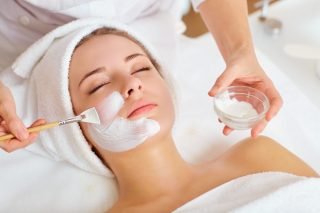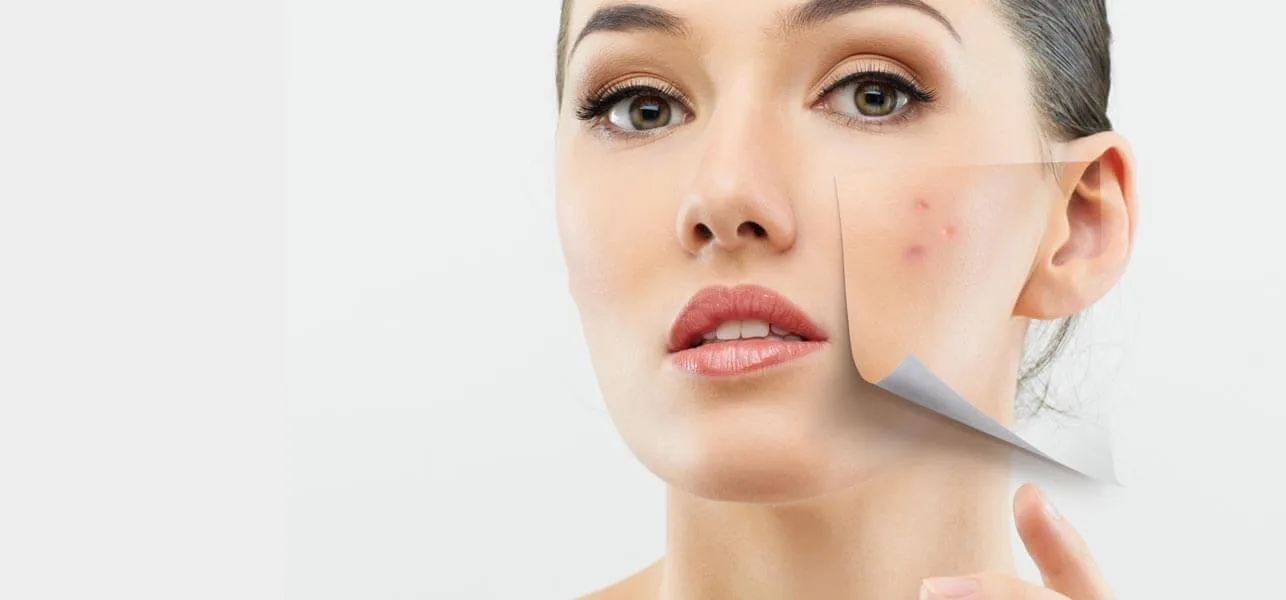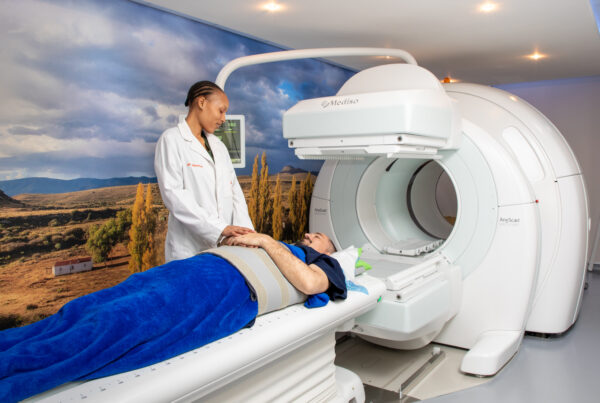Scarring occurs when the skin experiences trauma, and in the case of acne, the trauma is related to inflammation. When the damage to the dermis is severe, the skin can respond by quickly creating an abnormal amount of connective tissue in an attempt to heal itself. Depending on the blemish and skin type, this natural repair process can lead to irregular and textural changes that look and feel different from the rest of your skin.
Different types of scars
In order to treat the different types of scars, it’s helpful to learn how to distinguish between them. Like snowflakes, acne scars come in all shapes and sizes. The five types of acne scars are:
- Hypertrophic scars: These are bumpy, raised scars that are the result of too much tissue production.
- Keloid scars: This is a type of hypertrophic scar that extends beyond the original site of the injury.
- Boxcar scars: These are deep impressions with well-defined edges leftover from picking at cystic acne.
- Ice pick scars: This is a small impression with sharp edges.
![keto [longevitylive]](https://longevitylive.com/wp-content/uploads/2019/06/acne-1606765_1920-320x213.jpg)
- Roller scars: This is a deep impression with rounded, sloping edges leftover from picking at cystic acne.
The most common scars that people tend to suffer from are superficial pigmented acne marks. This is also known as post-inflammatory hyperpigmentation (PIH). Unlike scars, PIH marks are smooth to the touch, and as there is no permanent collagen damage, these tend to fade on their own over time, but occasionally will need depigmenting treatments.
Prevention is better than cure
The best way to avoid scarring is to prevent breakouts from happening in the first place, and never, ever to pick the spots. To do this, one must have a diligent skincare routine and I would recommend the following as a minimalist routine for those that suffer from acne:
Step 1
Morning and night, wash your face with a gentle, sulphate-free alphahydroxy (AHA, such as glycolic acid) or betahydroxy acid (BHA, such as salicylic acid) cleanser to dissolve excess oil and bacteria without stripping your skin or leaving it irritated.
Step 2
At night only, apply an acne treatment with active ingredients like salicylic acid, retinol, benzoyl peroxide, and niacinamide.
Step 3

Antonio Guillem/Shutterstock
Morning and night, use a lightweight, oil-free moisturizer that contains hydrating ingredients like hyaluronic acid, glycerin, and ceramides.
Step 4
In the morning only, wear oil-free sunscreen that contains SPF 30 or more. This provides broad-spectrum protection and is non-comedogenic.
The big question: How to get rid of acne scars
From my experience, treating acne scars and marks can be tricky. Thankfully, there are topical products and professional in-surgery treatments that can significantly improve their appearance. Remember, there is no magic wand to fade scarring, as it is a long process.
1. Target discoloration first
If you’re looking for more instant results, I recommend addressing the discoloration that accompanies scarring first. The star ingredient for fading discoloration is vitamin C, which contains antioxidants and has brightening benefits.
Additionally, add retinol to your skincare regime. It will leave skin looking brighter and smoother. Performing regular chemical peels infused with acids such as glycolic, lactic, and salicylic, which gently exfoliate to calm down redness and inflammation, also helps.
2. Try professional treatments
Some acne scarring requires more advanced treatments that can help to resurface the skin. Micro-needling and needling devices, such as Dermapen®, which promote collagen production by delivering gentle microscopic injuries to your skin work well. The idea is to help fill the depressions with your own collagen left behind by acne.

Studio Romantic/Shutterstock
When used correctly by a professional, a glycolic acid peel is a quick and effective way to rejuvenate the skin. It acts as an exfoliant dissolving the bonds between dead skin cells, revealing smooth skin below. Hyaluronic acid-based fillers can also be used for plumping up pitted skin to make it more even.
Lastly, there are laser treatments that work by emitting a wavelength of light or radiofrequency while penetrating your skin to soften the scar and stimulate the development of healthy collagen.
Bottom line
When it comes to scar treatment, the sooner you treat the scar, the better the results will be. On average, scars are active for 12 months, after which the scar is fully healed – completely white, no pink. This is when I typically recommend non-surgical treatments such as laser, needling devices and chemical peels or if necessary scar revision surgeries.
Remember, consistency is key in order to see improvement. It takes about eight weeks for newer scars and three to six months for existing ones to see some healing.
Visit SkinMiles and sign up for a free Face2Face Assessment. You will receive personal recommendations from Dr. Nikolic for your skin type or skin concern.



![women [longevity live]](https://longevitylive.com/wp-content/uploads/2020/01/photo-of-women-walking-down-the-street-1116984-100x100.jpg)










